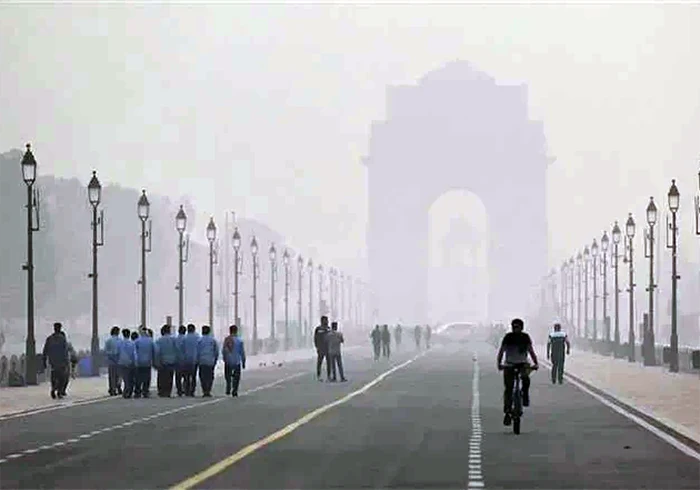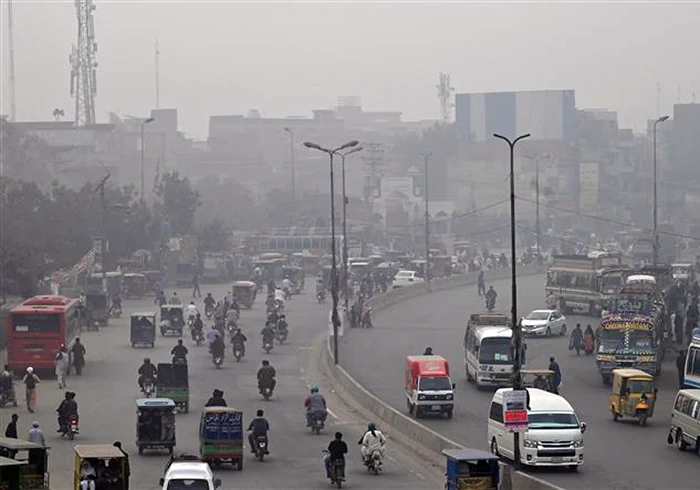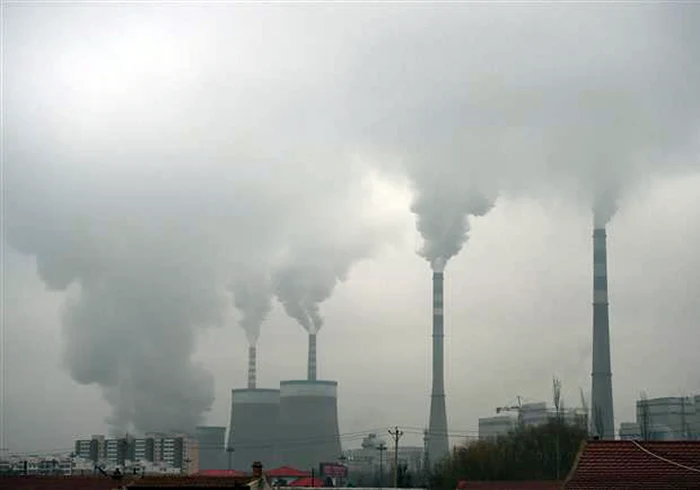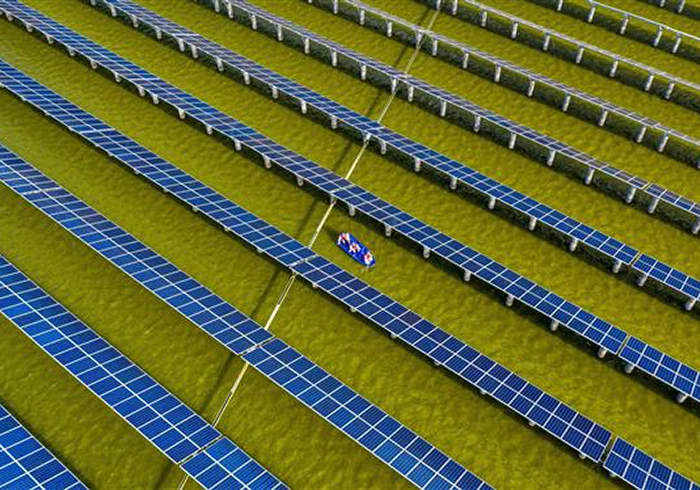Dense smog covers New Delhi, India. (Photo: AFP/VNA)
Air pollution is a serious problem in the world. According to statistics from the World Health Organization (WHO), 92% of the population lives in polluted air. This has a huge impact on human life and the natural environment.
Pakistan, India close many schools due to air pollution
In winter, India's capital New Delhi is shrouded in a thin layer of smog as cold air masses trap construction dust, vehicle exhaust and smoke from stubble burning in neighboring states, increasing the risk of respiratory illnesses in the city of 20 million people.
New Delhi has topped the list of the world's most polluted cities in real time, according to data from the Swiss-based IQAir Group. The new data has put New Delhi's AQI at the "hazardous" level.
Earlier this November, schools in several areas of India’s capital New Delhi were ordered to close for two days as the air quality index (AQI) dropped to “severe” levels. Most construction work in these areas was also suspended.
On November 8, the New Delhi capital government continued to extend the decision to close all schools until November 18.
The New Delhi metropolitan government said it would restrict construction and vehicle use next week to help reduce rising pollution levels. Air quality in the city of 20 million people remains hazardous despite some measures.
Last year, Bhiwadi in northern India was the most polluted city in the country and third in the world (according to IQAir); New Delhi was fourth.
Meanwhile in Pakistan, following the recommendation of health authorities, the government of Punjab province, Pakistan's most populous province, decided to close schools and markets in major cities of the province with a population of more than 110 million people from November 9 to 12 to protect human health due to severe air pollution with dense smog.
Under the provincial government's directive, except for priority facilities such as pharmacies, hospitals and courts, all schools, offices, restaurants and businesses must close to limit people from going out.
Dense smog covers Lahore, Pakistan, November 7. (Photo: AFP/VNA)
This week, the dense smog that has enveloped Lahore, the capital of Punjab province (Pakistan), has not only reduced visibility but also caused harm to human health, especially the respiratory system and eyes. On November 8, Lahore became one of the cities with the worst air quality in the world.
According to IQAir, Lahore's air quality index (AQI) on November 8 was at a "dangerous" level with 432 points, followed by New Delhi (India) with 302 points and the port city of Karachi (southern Pakistan) with 204 points.
For comparison, an AQI of 0-50 is considered good while an AQI of 400-500 will affect healthy people and be dangerous for those with existing illnesses.
More than 15,000 people in South Africa could die by 2050
Clearly, air pollution is not an issue unique to India or Pakistan. The Helsinki-based non-profit Center for Research on Energy and Clean Air (CREA) has warned that more than 15,000 people could die by 2050 from air pollution-related conditions if South Africa delays its plan to phase out coal-fired power plants until after 2030.
Smoke rises from a power plant. (Illustrative photo. AFP/VNA)
CREA research says that only one of Africa's heavy-duty power plants has been shut down, helping to avoid 220 deaths.
South Africa remains one of the world’s 12 biggest polluters and the world’s 7th largest coal producer. Coal is the bedrock of the South African economy , employing nearly 100,000 people and providing 80% of its electricity. But the country is facing an electricity crisis, with power cuts lasting 12 hours a day, sparking a new debate about switching to cleaner energy.
Many countries ignore the problem of air pollution
Poor African countries are ahead of most rich countries in including clean air quality and health benefits in their plans to tackle climate change, but their goals need to be backed by finance, action and clear policies, according to a report released by the Global Climate and Health Alliance (GCHA) on October 18.
The report found that Nigeria, Mali, Togo, Ghana and Côte d'Ivoire were among the top countries to address air quality concerns in their climate action plans submitted to the United Nations, known as nationally determined contributions (NDCs).
According to the ranking published by GCHA, 14 of the top 15 countries are low- or middle-income countries, led by Colombia and Mali, while Chile is the only high-income country among them.
But overall, only 51 out of 170 NDCs, or less than 35% of the plans analyzed, address the effects of air pollution on human health.
This means that 6 billion people live in countries that have yet to include the links between climate and clean air in their NDCs, the report says. Some of the countries that rank high in the index also have high mortality rates due to air pollution.
Electric workers check solar panels. (Photo: AFP/VNA)
Air pollution, mainly caused by the burning of fossil fuels, is responsible for more than 6.5 million deaths a year globally, and the number is rising, according to research published last year in the journal Lancet Planetary Health.
GCHA stresses that not including air pollution in NDCs means countries are missing out on opportunities for the planet, their people and their economies. If countries start taking climate action based on health and financial aspects, it will be a much more effective support for the fight against climate change.
NDCs show countries' climate priorities and the rankings provide scores that assess issues such as acknowledging the health impacts of air pollution, identifying actions to address the problem and weighing up potential benefits.
The recently released State of Global Air Quality Finance Report shows that only 1% of total international development finance – some $17 billion – has been committed to reducing air pollution between 2015 and 2021. Meanwhile, only 2% of total international public climate finance is dedicated to this task.
According to Vietnam+
Source








































































































Comment (0)